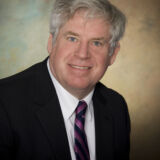Ulnar Nerve Decompression
Ulnar nerve decompression is a surgical procedure designed to explore the region around the elbow through which the ulnar nerve passes. The ulnar nerve is responsible for the “funny bone” phenomenon when you hit your elbow, as well as for other sensations in your hand. Damage to this nerve, usually from some form of trauma or other injury or in rare instances a tumor, can lead to a permanent sensation of numbness or tingling similar to the “funny bone” sensation. Additionally, damage to the nerve can lead to loss of function in the muscles supplied by it. Diagnosis of a peripheral nerve injury is usually confirmed by diagnostic tests to evaluate conduction of electrical impulses through the ulnar nerve and confirm that neuropathy is isolated to the ulnar nerve.
Goal of procedure
The goal of ulnar nerve surgery is to explore the nerve in the region of the elbow and remove any compressive forces on it that are causing the neuropathy (dysfunction of the nerve). The region of the elbow contains several passages through muscle and connective tissues that may potentially compress the ulnar nerve as it passes through. In particular, the triceps muscle in the upper arm, the bony groove in the elbow where the ulnar nerve passes, and another passage through muscle in the forearm, are the most common sites where the ulnar becomes compressed. By exploring these areas with a small incision on your skin and visualizing them with an arthroscope (a thin tube with a light at one end), any compressive forces can be released from each area individually.
After exploring for compressive forces on your ulnar nerve, if any have been found then they will be removed. This is done by either releasing them with special instruments or removing them completely if they cannot be released safely without cutting into healthy tissue.
How the procedure is performed
Patients are typically brought to the operating room for ulnar nerve surgery. Most patients do not require being put fully to sleep with general anesthesia for this procedure. Patients are usually given intravenous sedation medication to keep them resting and comfortable. Local anesthetic in the elbow region is also used to limit pain. Occasionally a nerve block can be applied to the entire arm that will be explored. An 3-4 inch incision is made along the elbow in between the two bony prominences that are on the same side of the arm as your thumb. The incision is taken deep enough to be able to visualize the ulnar nerve. The nerve is then explored into your upper arm until it passes through a muscle in your forearm. Once you’ve explored this entire region, it’s time to decompress (open up) the nerve so that it can move freely again! The overlying connective tissue and skin are closed with stitches after decompression has been achieved. We generally recommend that patients keep their arms elevated for 24-48 hours after surgery so as not to cause swelling around these areas during recovery time.
Risks
The major risks of the operation are bleeding and infection. The risk of either of these complications is usually less than 5%. Patients are given antibiotics before the procedure to limit the risk of infection, and the procedure is performed in careful fashion to limit damage to blood vessels that may cause significant bleeding. Additionally, even with exploration and decompression of the ulnar nerve, there is the risk that, in some cases, surgery will fail to improve a patient’s symptoms of ulnar neuropathy.
The procedure involves exposing and opening up the elbow joint so that any impingement on nerves can be identified. The surgeon carefully examines tissues in order to determine whether there are any areas where nerves are being compressed or damaged by bone fragments, scar tissue, or other factors. In some cases, additional surgery may be required if there are areas where nerves have been damaged beyond what can be repaired through this procedure alone.
Office Hours
Monday: 8 AM - 4:30 PM
Tuesday: 8 AM - 4:30 PM
Wednesday: 8 AM - 4:30 PM
Thursday: 8 AM - 4:30 PM
Friday: 8 AM - 4:30 PM
Saturday: Closed
Sunday: Closed
PROFESSIONAL DOCTORS
Dr. Schell has designed surgical techniques now used by many spinal surgeons.
MODERN EQUIPMENT
The most up-to-date medical equipment, to give you the best care that you deserve.
Professional spinal care and pain care experts are standing by to assist you. If we are not able to answer your question without an on-site appointment, we can schedule one for you.


